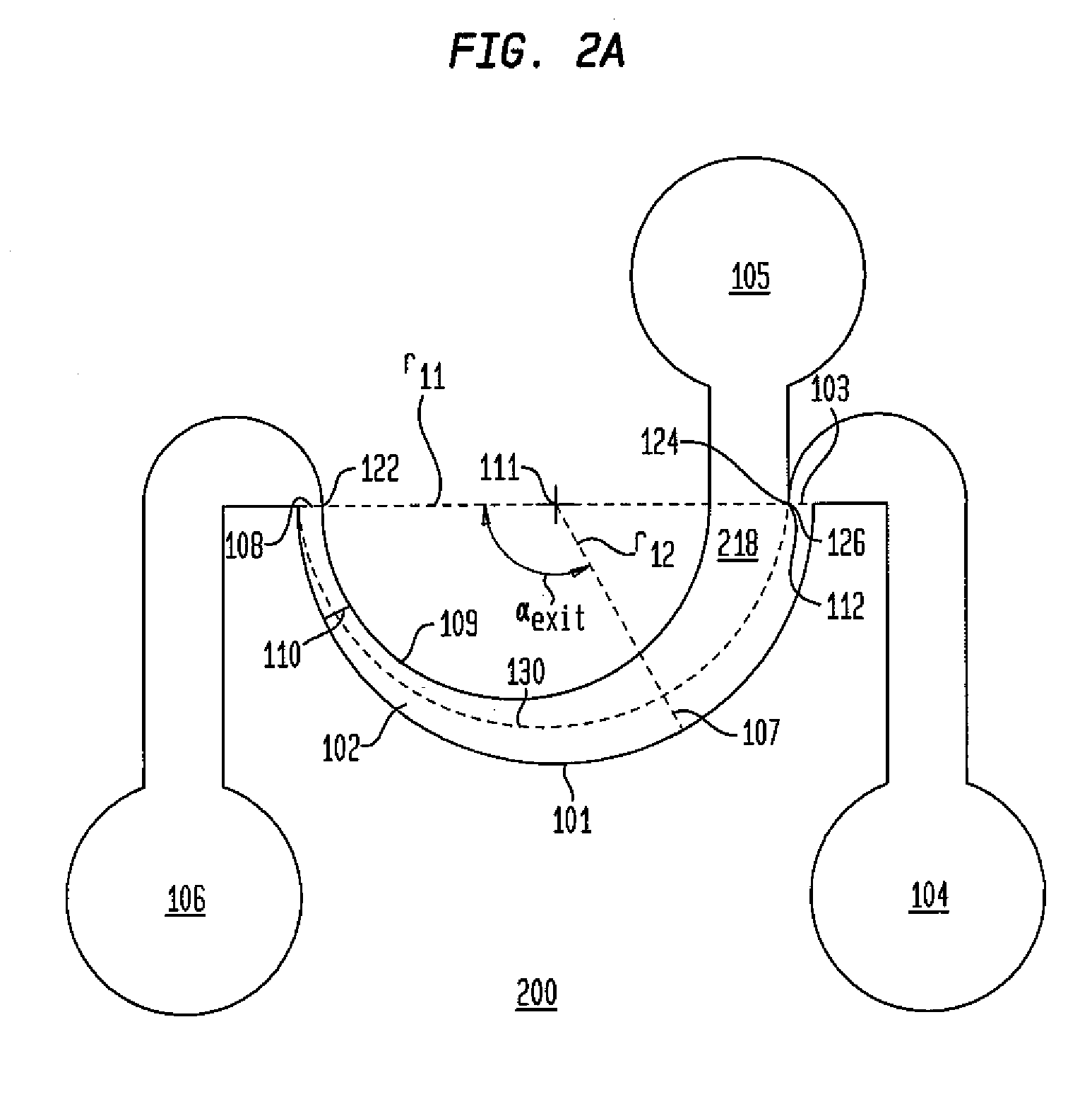Aerodynamic separation nozzle
- Summary
- Abstract
- Description
- Claims
- Application Information
AI Technical Summary
Benefits of technology
Problems solved by technology
Method used
Image
Examples
third embodiment
[0180]In a third embodiment, the process gas also includes a substantially liquid constituent that passes the skimmer 112 into the deflection diffuser 104 and remains liquid as it passes through the deflection diffuser 104 and passes external to the separation nozzle. In this manner a portion of the heavier species of the process gas that are separated by the separation nozzle are recovered in liquid form suitable for use as part of a refrigerant system.
[0181]The CFD results depicted in FIGS. 7d and 8b with respect to an embodiment of a type-2 nozzle 200 detail the effect of a preconditioned, or in this embodiment a cooled process gas entering a cooled type-2 nozzle 200. FIG. 8b is a depiction of CFD results of the static temperature of a process gas going through an embodiment of a Type-2 nozzle 200 having the inlet gas pressure of 29 psig and an inlet gas temperature of 434° R. It can be seen at point 827 where T=434°, that the gas enters the inlet gas reservoir 106 and continues ...
first embodiment
[0246]a multi-stage, single source, separation loop assembly whereby raw feed gas is introduced at only a single stage 2400, also described as a source separation loop 2500, is depicted in FIG. 22. In the schematic of the source separation loop 2500, the elements of the stage 2400 are simplified into a schematic compressor 2502 and a the stage nozzle module 2190. The schematic compressor 2502 generally in the case of the stage 2400 embodiment described in FIG. 21, comprises the following elements: (a) compressor vessel 2420; (b) compressor 2410; (c) pulse vessel 2404; (d) the valves interconnected each of the aforementioned elements (e.g., the nozzle valve 2402); and, (e) sensors (e.g., the temperature sensor 2432). Effectively, the schematic compressor 2502 represents all elements of the stage 2400 external to the stage nozzle module 2190 or the outlet manifold of the stage nozzle module 2190. Each stage 2400 present in the source separation loop 2500 is labeled from the stage 2400...
PUM
| Property | Measurement | Unit |
|---|---|---|
| Fraction | aaaaa | aaaaa |
| Fraction | aaaaa | aaaaa |
| Angle | aaaaa | aaaaa |
Abstract
Description
Claims
Application Information
 Login to View More
Login to View More - R&D
- Intellectual Property
- Life Sciences
- Materials
- Tech Scout
- Unparalleled Data Quality
- Higher Quality Content
- 60% Fewer Hallucinations
Browse by: Latest US Patents, China's latest patents, Technical Efficacy Thesaurus, Application Domain, Technology Topic, Popular Technical Reports.
© 2025 PatSnap. All rights reserved.Legal|Privacy policy|Modern Slavery Act Transparency Statement|Sitemap|About US| Contact US: help@patsnap.com



